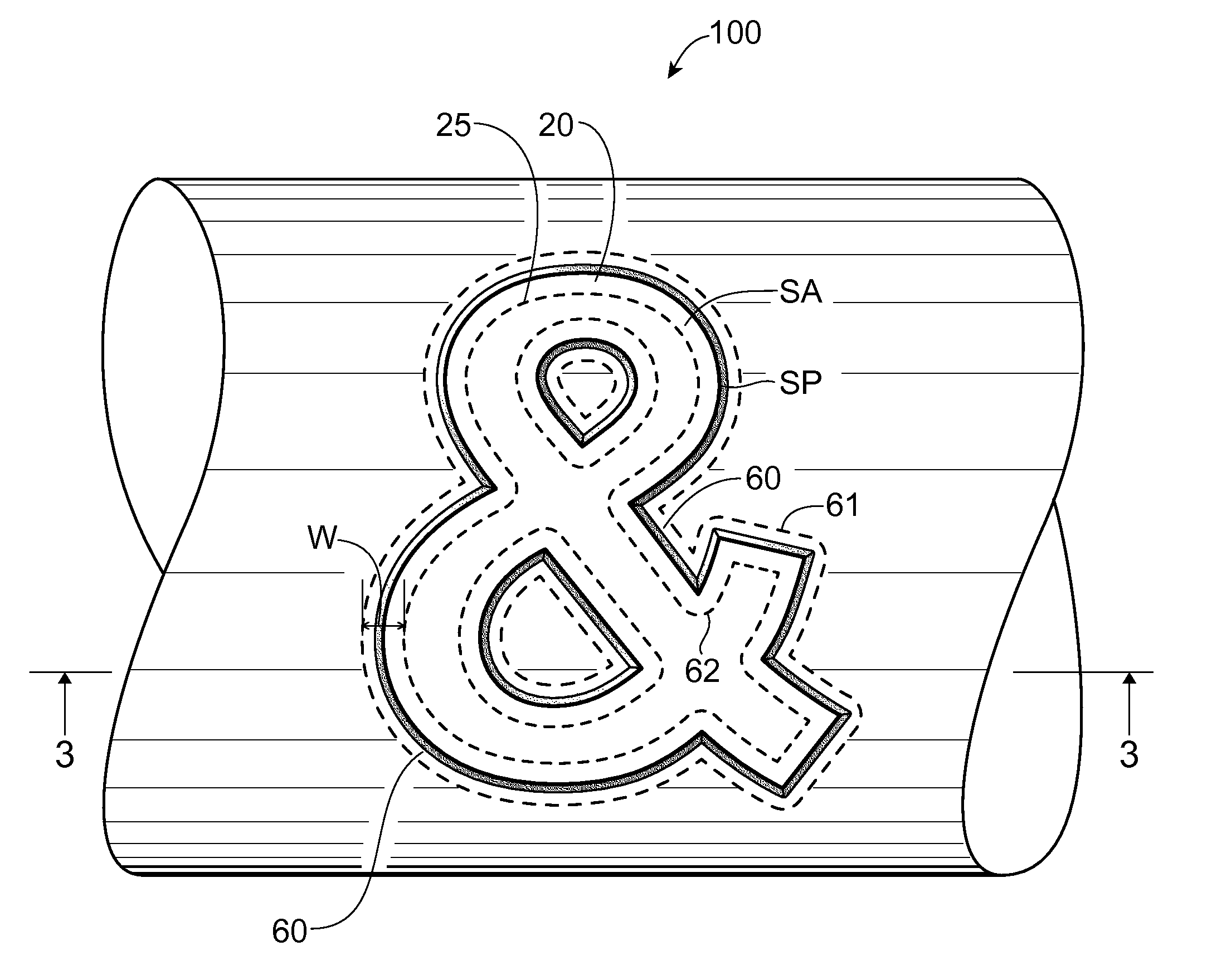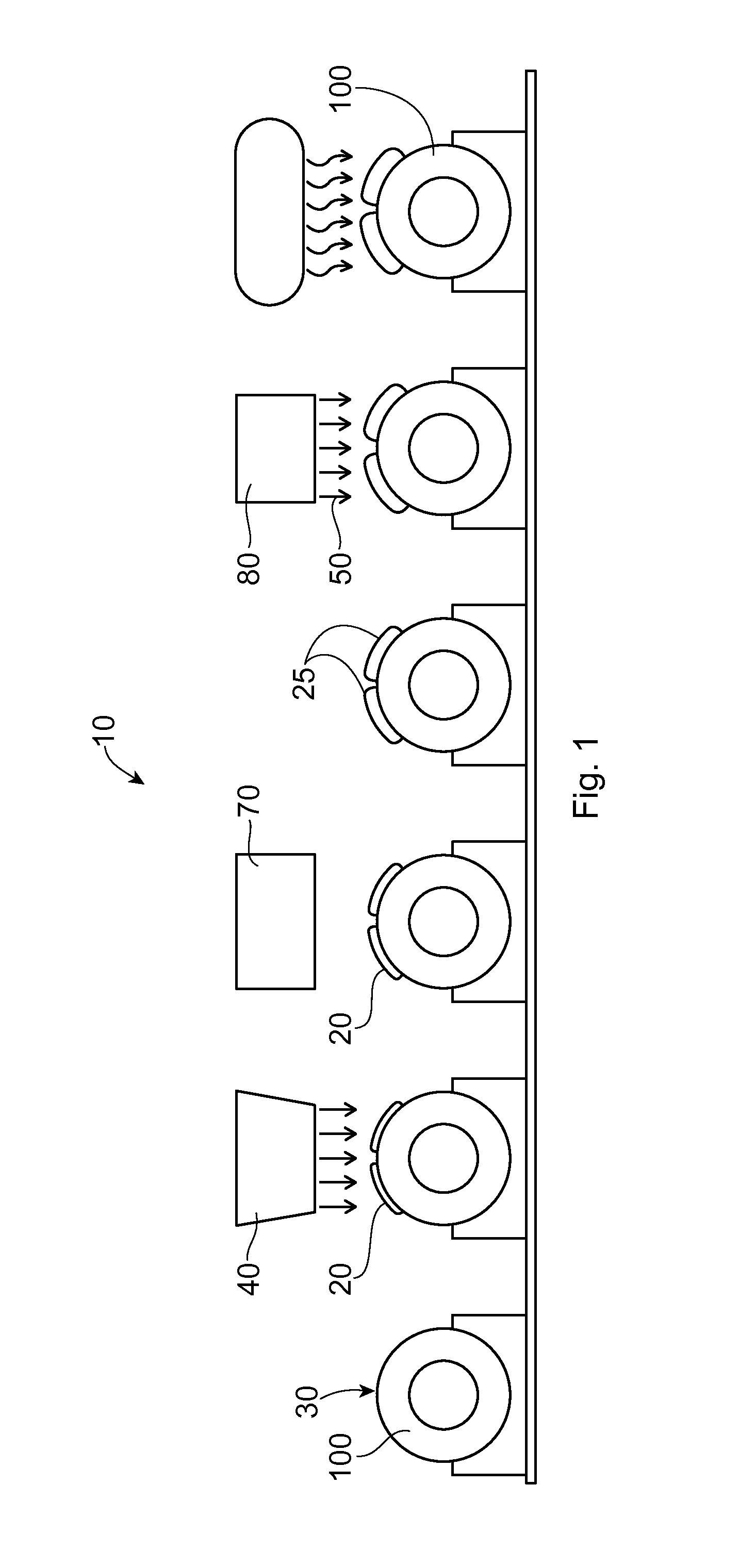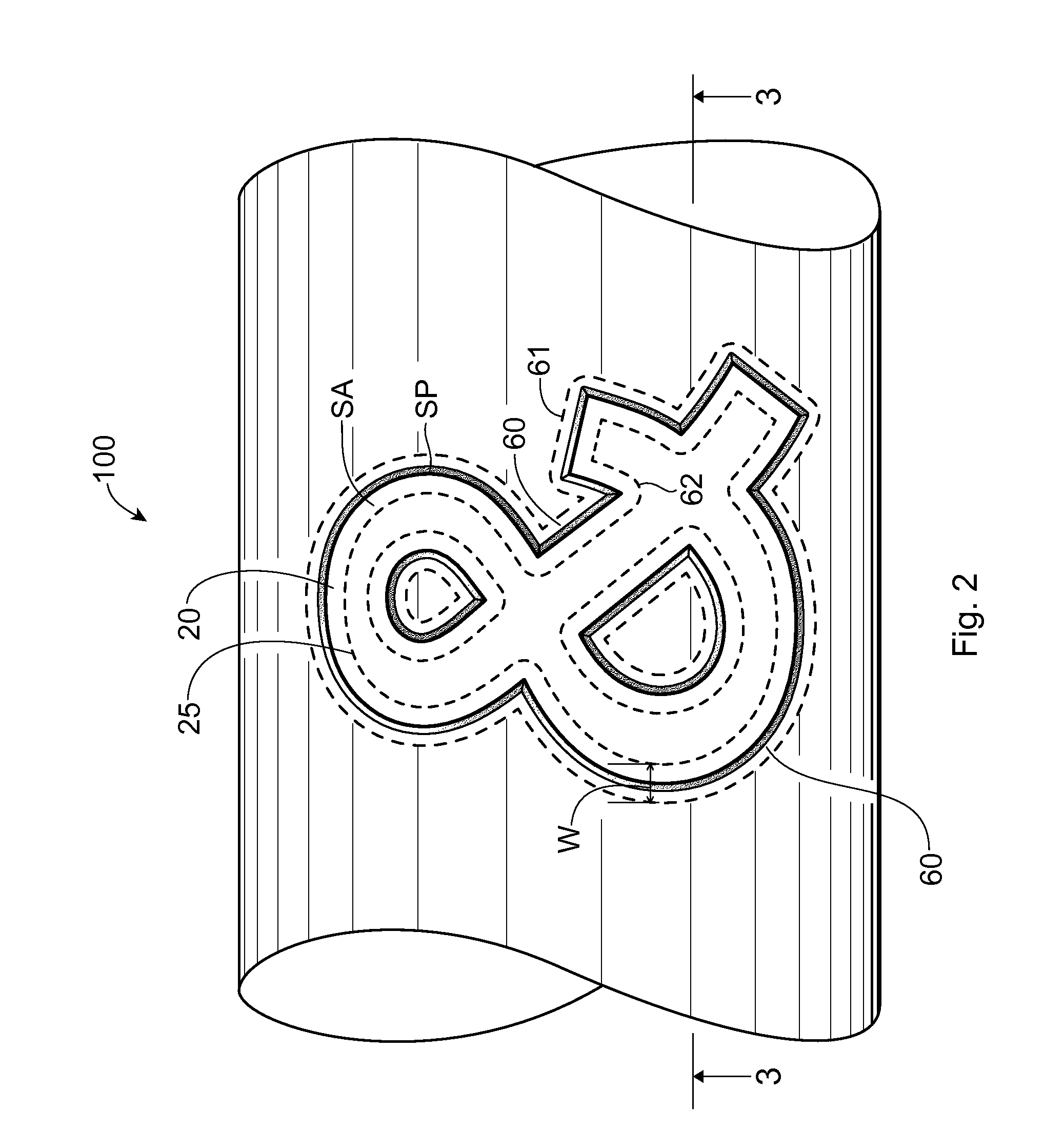Process for printing and securing three-dimensional pattern on non-fibrous substrates and article comprising non-fibrous surface having three-dimensional pattern thereon
a technology of non-fibrous substrates and printing methods, which is applied in the direction of envelope/bag making machinery, paper/cardboard containers, instruments, etc., can solve the problems of non-fibrous materials, not having fibers, and being poorly suited to this purpos
- Summary
- Abstract
- Description
- Claims
- Application Information
AI Technical Summary
Benefits of technology
Problems solved by technology
Method used
Image
Examples
example
[0038]An HDPE bottle has been flame-treated to achieve higher surface energy and creation of polar sites to improve adhesion with the ink and chemical cross linking with the varnish. Flame treatment—is a controlled, rapid, cost-effective method of increasing surface energy and wettability of polyolefins and metallic components. This high-temperature treatment uses ionized gaseous oxygen via jet flames across a surface of the substrate to add polar functional groups to the surface while melting the surface molecules and locking them into place upon cooling.
[0039]An exemplary test composition can comprise from about 1% to about 20% by dry weight of EXPANCEL® 909 DU 80 particles, expending from 40 to 200 microns in diameter; from about 40% to about 80% of a binder, resin and solvent, or plasticizer; from about 0.1% to about 20% of a pigment and filler; and from about 2% to about 35% of other (optional) substances, such as, e.g., thickeners, dispersants, et cetera.
[0040]In the test, a s...
PUM
| Property | Measurement | Unit |
|---|---|---|
| perimeter | aaaaa | aaaaa |
| diameter | aaaaa | aaaaa |
| temperature | aaaaa | aaaaa |
Abstract
Description
Claims
Application Information
 Login to View More
Login to View More - R&D
- Intellectual Property
- Life Sciences
- Materials
- Tech Scout
- Unparalleled Data Quality
- Higher Quality Content
- 60% Fewer Hallucinations
Browse by: Latest US Patents, China's latest patents, Technical Efficacy Thesaurus, Application Domain, Technology Topic, Popular Technical Reports.
© 2025 PatSnap. All rights reserved.Legal|Privacy policy|Modern Slavery Act Transparency Statement|Sitemap|About US| Contact US: help@patsnap.com



